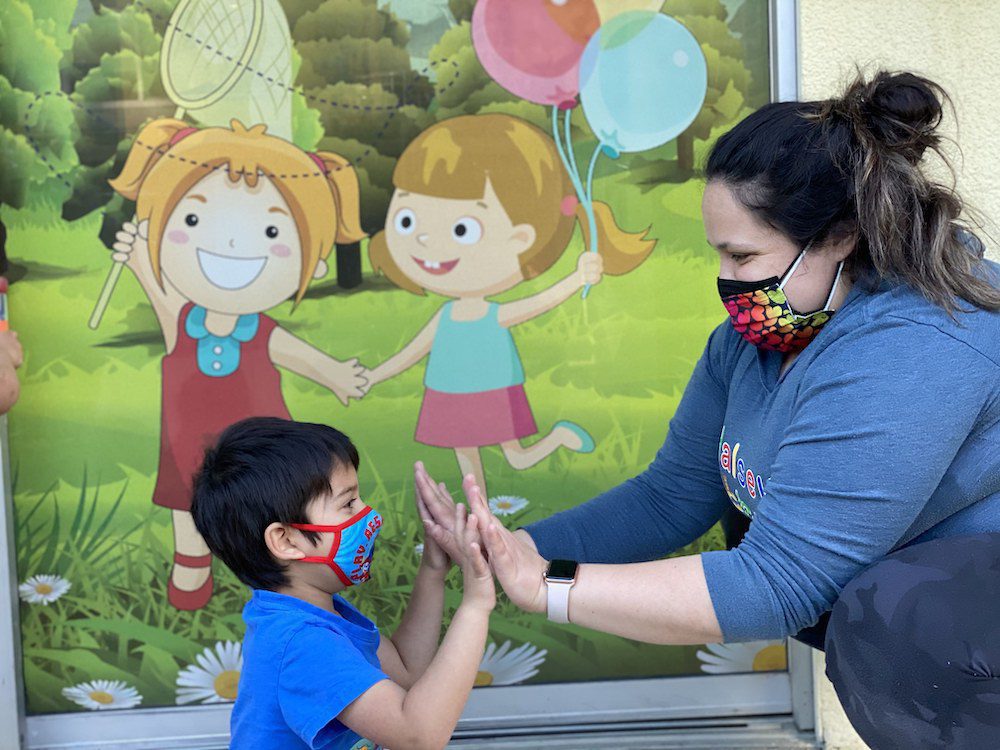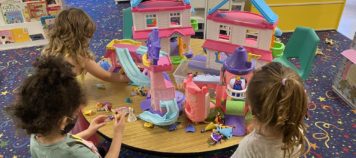Discipline is not a punishment
Discipline is about learning how to recognize our desires and feelings and act on them appropriately within the boundaries or limits of society and our surroundings.
When used appropriately adult initiated discipline teaches children how to become emotionally and socially responsible by learning self-discipline. Disciplined children learn to respect adults, authority, and the needs and desires of others. They learn how to postpone pleasure or immediate gratification, how to be assertive without being aggressive and to tolerate discomfort when necessary. Discipline starts when your child is born and never ends.
In order for discipline to be effective it needs to be:
- provided by an adult close to the child, like a parent or teacher
- used to encourage or make children feel better, not used to humiliate or shame or make them feel worse
- consistent – same rules & consequences no matter where you are or what adult is in charge
- timely – action taken at the time the behavior is exhibited not hours or days later
- considered fair to both the child and the adult
- developmentally and personally appropriate
- able to help teach the child to become self-disciplined
Establish Your Expectations & Procedures
The best way to discipline children is to establish age appropriate expectations and procedures proactively.
- Prioritize your expectations and procedures.
- Behaviors that jeopardizes personal safety
- Behaviors that may harm other people or property
- Behaviors you find annoying like interrupting, whining, temper tantrums, demanding something at the store…
- Provide safe age appropriate environments for your child.
- Lead by example. Preschoolers love to imitate adults. Teach them the behaviors you want them to imitate and they will copy you.
- Be an active listener. If your child wants to tell you how he feels about his brother taking his toy, hear him out. Don’t cut him off. Listen and work together to come up with a solution through conversation. Acknowledge your child’s feelings and help him make the right choice on what to do.
- Set reasonable and consistent limits. For example, don’t expect a toddler to be able to sit for more than 5 minutes.
- Understand and accept age-appropriate behavior. Certain behaviors happen simply due to the child’s lack of understanding, interest in exploration or lack of motor-skills. Knocking over food or spilling a glass of milk is normal behavior for a toddler. It is not willful defiance. On the other hand, a child who refuses to stay in his car seat after repeated warnings is being willfully defiant.
- Establish reasonable consequences, knowing consequences do not have to be punitive. They include praise, recognition, distraction & redirection.
- Give your child limited choices. It puts him in control to some degree. Try saying “Do you want to wear the blue shirt or the red one?”
- Give warnings before moving on to another activity. Say “You can go down the slide 5 more times, then we are going home.”
- Use your words carefully. When possible tell your child what to do instead of what not to do. Instead of saying “GET your feet off the couch!” Say “Please keep your feet on the floor.” Instead of saying “Stop yelling!” try “Inside voices please.”
- Offer reasons why. Say “We don’t call people names because it makes them sad.” Or “Please talk quietly. Yelling hurts my ears.”
- Know that every child is different and adjust expectations accordingly taking personal temperament and personality into consideration. A stubborn child needs to be raised differently than a compliant child.
- Minimize negative consequences and only use as a last resort.
Start Disciplining
Praise & Recognize Appropriate Behavior
It may not seem like discipline at first, but calling attention to appropriate behavior is probably the most important element in discipline. It helps reinforce your expectations and makes the child feel good. They will soon realize that the best way to get attention is not to do something wrong but to do something right.
You should try to recognize appropriate behavior at least twice as much as you call attention to inappropriate behavior. Here’s how:
- Anticipate inappropriate behavior situations and minimize or eliminate them. Often children behave inappropriately because they are tired, hungry or crashing from a sugar high. Certain behaviors happen simply due to the child’s lack of understanding, interest in exploration or lack of motor-skills. Anticipate those incidences and create a plan to prevent them.
- Establish routines so children know what to do next – wake up time, nap time, dinner time, bed time…
- Plan ice cream treats so the crash hits at bedtime.
- If your child loves to get his hands on every item in the store, give him something to hold or play with before you walk in.
- Know that children have short attentions spans. Don’t expect too much.
- Ignore behaviors that really don’t matter like jumping up and down or fidgeting and temper tantrums. If you call attention to the behavior or negotiate your child out of it, they’ll go on forever.
- Actively ignore behaviors. How can you actively ignore? Say something like “If you want to yell, please go do it in your bedroom.” Then you ignore.
- Allow safe natural consequences to run their course. For example if your child is trying to toss a ball over the fence, let the natural consequence of losing the ball happen. If it’s too hot for a jacket, let your child wear it anyway. She’ll take it off when she’s hot and learn something for the future. (Natural consequences can sometimes be dangerous, so use caution. For example, a natural consequence of running in the street could be being hit by a car.)
- Praise & recognize positive behavior.
- Say “Thank you for putting away your toys.”
- Smile and nod.
- Give a hug or a pat on the back.
- Say “I see Michael sitting nicely.”
- Ask “How does it make you feel to know you did it?”
- Use material rewards with caution. If they are used too much children won’t behave without them and can lead to negotiations and bargaining for more.
- Distract or redirect your child into a new activity before problems arise.
- Distraction is used to divert your child’s attention to something else. Start singing a song, doing jumping jacks, making a silly face… Start a new activity: reading, play-dough, walking, running… Just move on to something else and ignore the behavior.
- Redirection is used to teach your child a different way to do something. The inappropriate behavior is pointed out and an alternative is given. If your child is throwing books say “Books are for reading. Balls are for throwing. Let’s play catch with this ball.”
- Enforce a logical consequence. If your child is throwing blocks you might say “Looks like we need to put the blocks away until you are ready to use them correctly.”
- Offer limited choices. If children are fighting over a toy you might say “Would you like to sit on my lap until Sally’s turn is over or would you like to play with the blocks until it is your turn?”
- Avoid nagging and making threats you don’t mean or won’t enforce. Doing so may actually encourage the undesired behavior.
Don’t Use Punitive Time-Outs
Traditional time-outs are punitive in nature; scold a child then send them away. A parent might yell “Go take a time-out and think about what you did!” Then leave the child in isolation. Instead of thinking about what he did, he thinks about what the parent just did. He just got yelled at by an adult who looked angry. Then instead of getting the love and support he needed to understand and learn self-discipline he was isolated and ignored. Use quiet-time instead.
Use Quiet-Time (Positive Time-Out)
Use quiet-time minimally as a last resort and only with children 20 months or older.
Unlike a traditional time-out, quiet-time is more of a helping hand than a punishment.
A quiet-time is simply a cooling off period with no activities. You should either calmly take the child to the quiet-time area or ask the child to go there. (The quiet-time area could be a chair, a carpet, your lap…) You might say something like “Biting is not o.k. Please take some quiet-time.”
Quiet-times should:
- be short; one minute for each year of child’s age and should only be used on children 20 months or older. Any younger and they just do not understand.
- take place where you can still see the child
- be ended by the adult, not the child
- never be in a corner facing the wall
- never be used to humiliate
- never be longer than 5 minutes
Quiet-times can take place on mommy’s or daddy’s lap too. You might say “It seems like you are getting angry. Come take a break with me.”
A quiet-time gives your child a few minutes to settle down and think about what has happened. You should end the quiet-time by briefly talking with the child about the misbehavior.
- It helps to explain what happened, what should not have been done and what should have been done instead. Your child should be given the opportunity to practice the correct behavior. You might say, “It’s not OK to hit your friend. Instead you need to use you words. Next time tell Sally it’s your turn to ride the bike.”
- It’s important that your child thinks about how the behavior made other people feel. Say “How do you think that made Sally feel?”
- Encourage your child to apologize.
Quiet-time can help your child learn important life skills like taking time to calm down and cool off before doing or saying something. Quiet-time also gives adults time too cool off and think. It’s a win-win.
When you use quiet-time you encourage your child to develop positive beliefs about herself, her world, and her behavior. She’ll learn from her mistakes. She’ll learn how to calm herself down. How to apologize and how to solve problems on her own. She’ll learn self-discipline.
Use consequences like losing privileges, activities, or toys minimally as a last resort.
There are basically two types of consequences here. Ones that are linked directly to the behavior and ones that have no connection and are meant to be punitive.
- Directly linked consequence
- If your child leaves a toy out, you might say “I put your teddy bear away for you since you left it out. When you remember to put away your other toys on your own, you’ll earn your teddy bear back.”
- Punitive Consequence
- Let your child participate either in advance or at the time of the misbehavior what the consequence is. You might say “Since you hit your brother do you think you should miss out on game time or dessert?”
Apply rules, expectations and consequences consistently
- Give consequences as soon as possible. Do not punish later. For example if your child bit someone at school do not punish at home. Instead talk about it briefly and discuss what to do instead. Say “Biting hurts. Next time use or words or walk away.”
- Do not enter into arguments with your child during the correction process.
- Make the consequences brief.
- Say what you mean and say it without yelling. When possible squat down and say it face to face at eye level.
- Make sure your child understands that the correction is directed at the behavior not the child. There is no such thing as a ‘bad’ child. The behavior is inappropriate. Say “No hitting.” Or “Hitting is not o.k.” Or “Please keep your hands to yourself.” Not “You are bad because you hit.” Or “You are mean.”
- Don’t argue or negotiate.
- Don’t humiliate, threaten or hit under any circumstances.
- Follow consequences with love and trust. And always forgive.
- Avoid bringing up past mistakes.
The purpose of discipline is to teach, not to punish. Use discipline to make your child feel better not worse. It takes a lot of effort, time, patience and love. But when you follow these suggestions, you will help your child make good choices, be empathetic and become self-disciplined.
Read about Halsey Schools’ Discipline policy here. It should look very familiar after reading this. 🙂
- Happy Times November 2024 - October 29, 2024
- Ms. Tiffany - September 27, 2024
- Happy Times October 2024 - September 27, 2024





